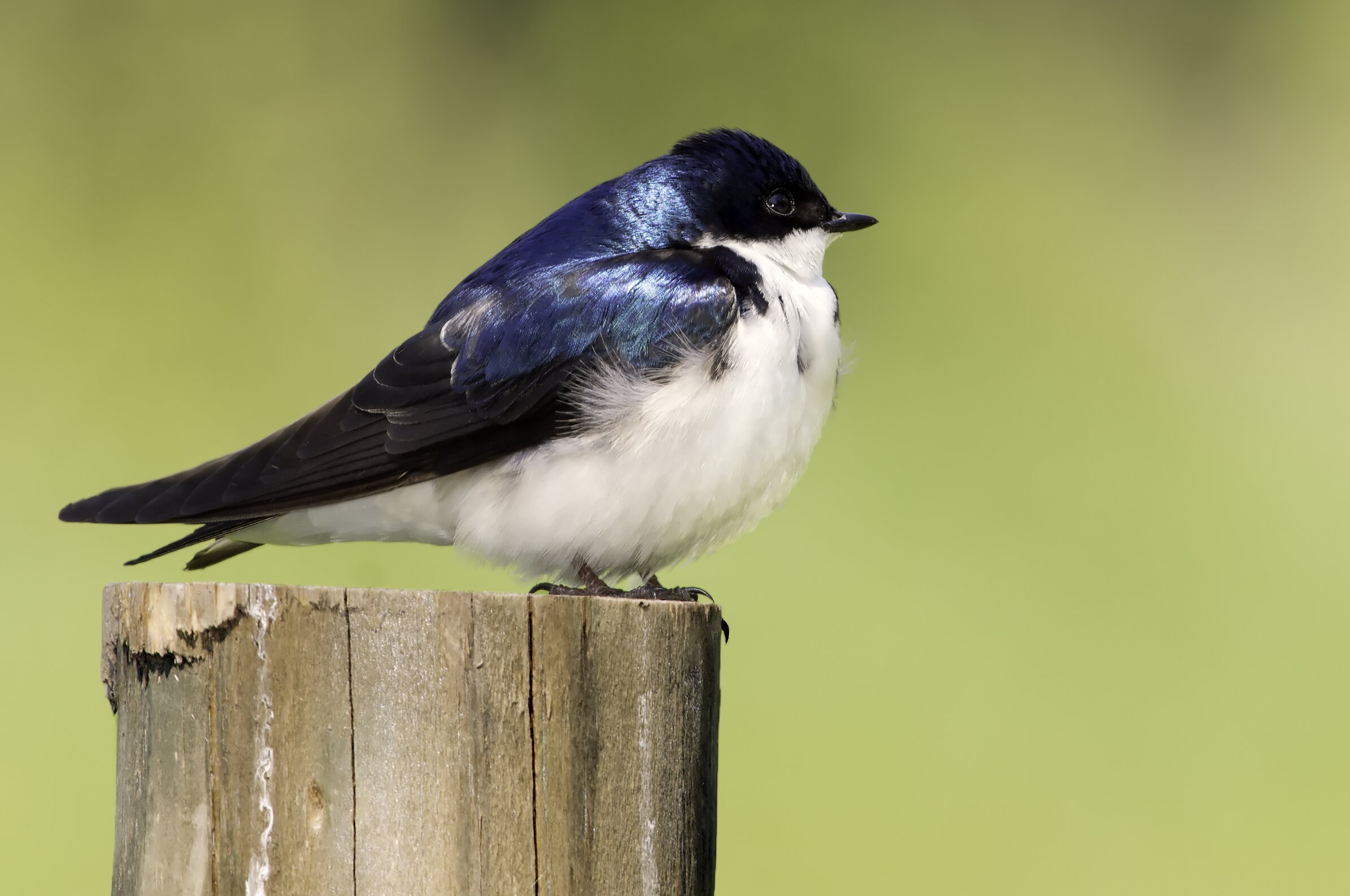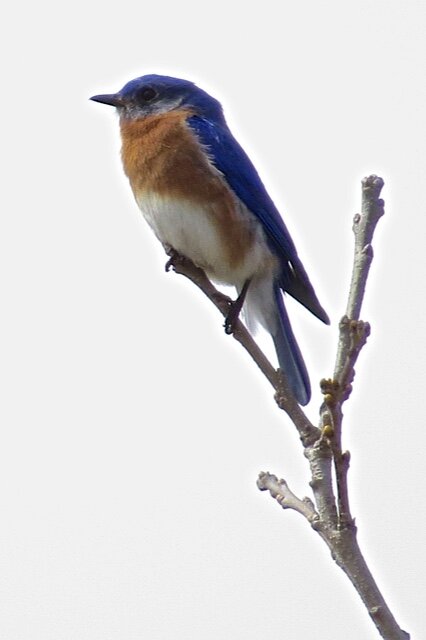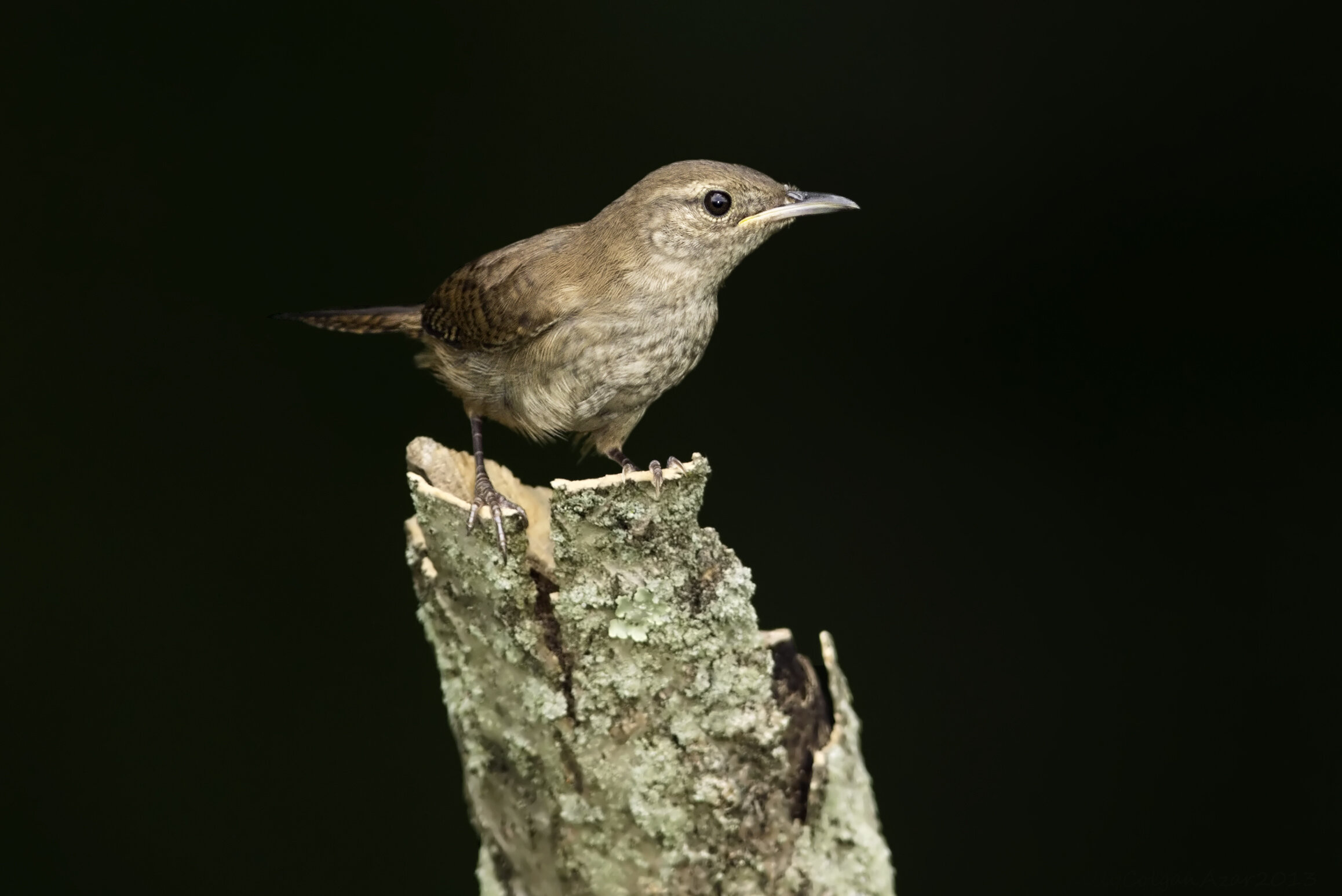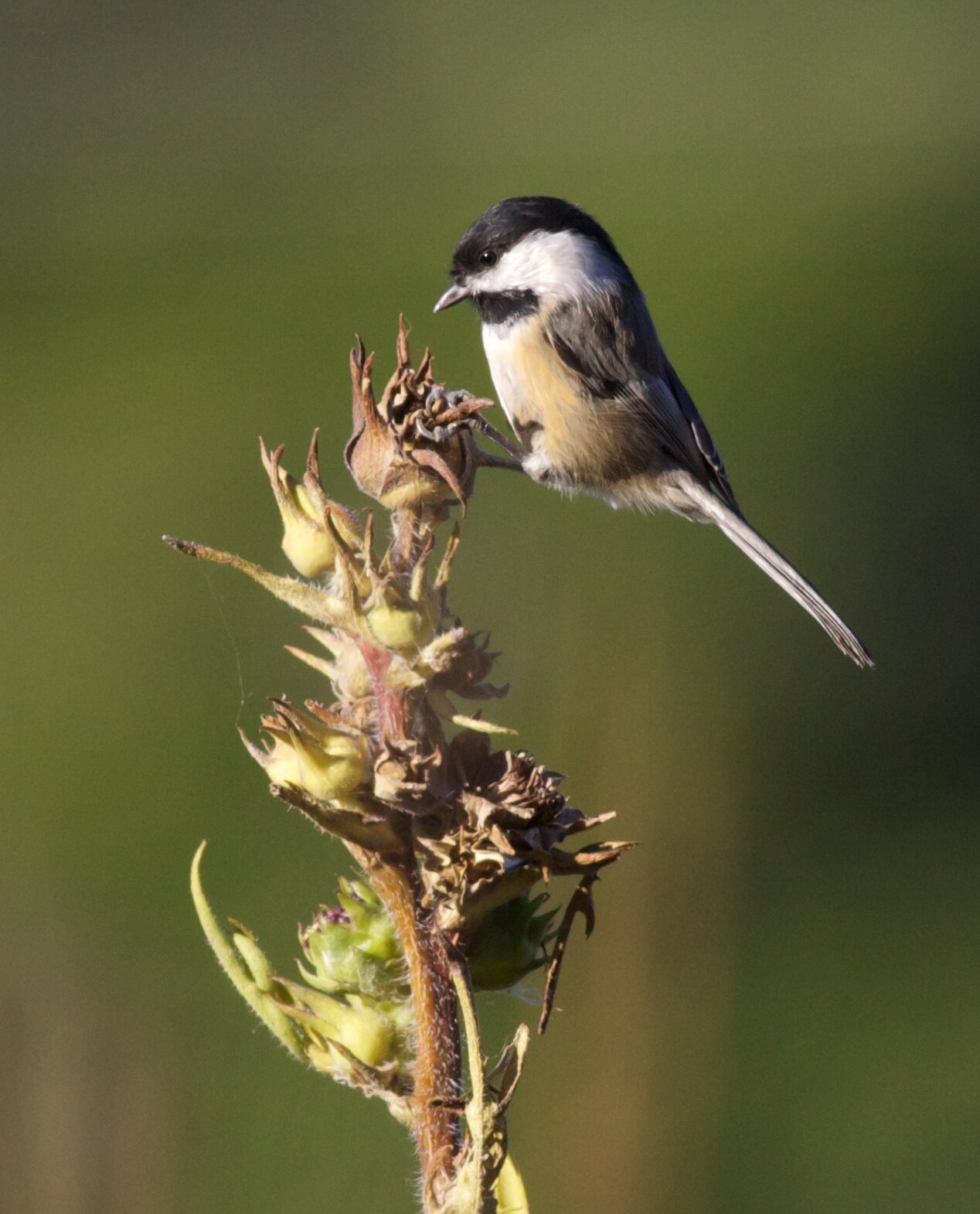In the year of the pandemic, one outdoor citizen science activity that individuals or couples could safely participate in and enjoy is monitoring songbird nest boxes. 2020 was a very good year for songbirds using nest boxes at Goose Pond Sanctuary and Erstad Prairie, and on partner’s lands. Below is a summary of this citizen science effort, made possible because of the great work of volunteers.
Photos below: Tree Swallow (Kelly Colgan Azar), Eastern Bluebird (Pat Ready), House Wren (Kelly Colgan Azar), and Black-capped Chickadee (Arlene Koziol)
Tree swallow numbers declined 49% between 1966 and 2014, and they are one songbird that really benefits from people that erect, maintain, and monitor nest boxes. In 2020 alone, we fledged an amazing 434 tree swallows from the 100 boxes at Goose Pond Sanctuary, plus our partners fledged an additional 261 tree swallows fledged from their boxes. An average of 4.34 young fledged in the 100 boxes at Goose Pond is very high, considering a few boxes were not used.
Last summer, JD Arnston from Arlington reported a first from his observation of eight tree swallows fledging from a single box! This is a first that we can remember of even having eight eggs. If this continues we may have to increase the square inches of the boxes.
Tree Swallows always place feathers in their nests. Start of a nest. Photo by Mark Martin
Goose Pond, with its water and tall grass prairies, provide ideal habitat for tree swallows. Bluebirds are ground feeders and like to feed in short grass on cutworms. Since there is very little shortgrass at Goose Pond we rarely have a brood of eastern bluebirds.
2020 Songbird Nest Box Results, table created by Goose Pond Sanctuary staff
Photo by Pat Ready
From the spreadsheet you can see that bluebirds like oak savannas and golf courses. Our friends the house wrens (see nest image, right) prefer wooded habitat, and this was a banner year for them. The nest boxes at Pleasant Valley Conservancy are mostly in oak savanna habitat, and the Sun Prairie Golf Course may lack water in the local area for swallows. Black-capped chickadees are uncommon finds in our nest boxes. When we find a pair of chickadees we immediately place a one inch diameter hole over the larger entrance to keep tree swallows from disturbing the chickadees. We have 2.5 inch spare “holes” that we screw in place.
Monitoring nest boxes is something for people aged from 6 to 96. “Bluebird Man”, 96-year old Al Larson, with the Golden Eagle Audubon chapter from Boise, Idaho, has been busy for decades helping western and mountain bluebirds. Last year he monitored 350 boxes and banded over 900 bluebirds. And we thought we were doing good to have all of our volunteers monitor 223 nest boxes!
Bluebird nest box, photo by Alrene Koziol
If you would like to help songbirds, this is an excellent time to build or purchase nest boxes. Members of the Bluebird Restoration Association of Wisconsin (BRAW) have been leaders in Wisconsin in restoring bluebird numbers. BRAW recently placed an ad in a recent issue of Wisconsin Outdoor News offering new members at the $25.00 level up to 5 bluebird boxes, predator guards and pole clamps, an information package and four issues of Wisconsin Bluebird. However, at this time “Due to overwhelming response our nest box promotion is temporarily on hold.” We are glad to see the high level of interest. Pat Ready, Madison Audubon volunteer, is the President of BRAW and the latest newsletter reports that members fledged the following: 19,385 bluebirds, 7,957 tree swallows, 894 chickadees, and 5,067 house wrens. We encourage you to join!
If you can’t erect nest boxes because of your location or situation, you can still help by simply becoming a member of conservation groups like Madison Audubon, BRAW, or many other organizations. Giving a membership to family and friends as birthday or anniversary gifts is an excellent way of bringing new people and resources to these conservation organizations. It has never been easier to help the environment in this way.
The 1,159 fledged songbirds would like to thank our monitors. If you would like to help monitor nest boxes on preserves in Columbia County contact Graham at gsteinhauer@madisonaudubon.org.
Written by Mark Martin and Susan Foote-Martin, Goose Pond Sanctuary resident managers, and Graham Steinhauer, Goose Pond Sanctuary land steward; edited by Brenna Marsicek, Madison Audubon director of communications & outreach
Cover photo by Lorie Shaull FCC













